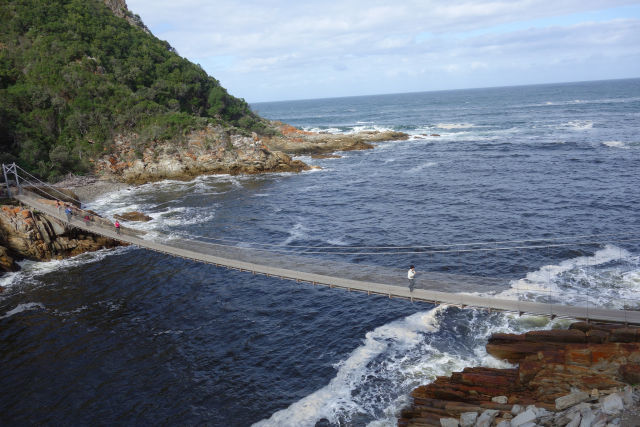
I remember, maybe 12 years ago, attending a talk by an environmental activist who discussed clean and sustainable energy and the difficulties in obtaining it. She was not your average activist—she had, as I recall, qualifications in chemical engineering.
One thing she mentioned in passing (and I may not have remembered this accurately) was that when fresh water flows into salt water, the process of salination releases a relatively large amount of energy, but that no one knew how to harvest it effectively.
That may eventually change if the work of Mathijs Janssen, from Utrecht University, pays off.
A capacitor says to a bartender: hey, stop charging me
Here is the basic idea: a capacitor consists of two metal plates separated by a gap. When we connect it to a battery, charge builds up on the plates, and energy is stored in the electric field that tries to pull the two plates together. Now, if we connect a resistor across the plates, the charges flow through the resistor and dissipate energy by heating it up. For a perfect capacitor, the amount of energy we get out is exactly what we put in.
But we can change this picture. After charging our capacitor from the battery, we can pull the plates further apart. This costs energy (because the plates are attracted to each other), which is also stored in the capacitor. Now, when we attach our resistor, the energy we get out is the electrical energy we put in, plus the mechanical energy we put into moving the plates.
That’s one salty capacitor
As a way of generating energy, moving capacitor plates is probably not optimum. Luckily, there is an alternative. The separation between the charges is not determined by just the physical distance between the plates, but also by the material between them. For instance, two plates separated by one millimeter of air is not the same as two plates separated by one millimeter of glass. The charges see the glass as an electrically denser material than air, so it behaves as if the plates are about five times farther apart.
We can make use of this naturally by placing a capacitor in the tidal flow where a river pours into the sea. When the tide is running high, the capacitor will fill with salt water, and when the tide is running out, it will fill with fresh water. If we charge during the fresh water part of the cycle and discharge during the salt water part of the cycle, we can harvest extra energy. That extra energy is explained by the fact that the concentration difference between the fresh water and salt water creates a force (an osmotic pressure) that can be used to do work.
Even better, Janssen showed that it worked with a real capacitor, and that the performance agreed reasonably well with calculations. In fact, he showed a whole slew of results, such as demonstrating that you can make use of the temperature difference between water reservoirs to increase the amount of energy you get.
Janssen also showed that the amount of energy extracted is about 2kJ per liter of water. This is equivalent to the amount of energy you would get if that liter of water was dropped 200 meters onto a turbine.
But the concept is more adaptable than falling water. You could put the capacitors on the cooling circuit of a conventional power plant and obtain more electrical energy from the temperature difference between the hot waste water and the cooler reservoir it's dumped into—no salt water required. And you can run the capacitor in reverse to desalinate salty water, though I didn’t see any efficiency claims about that (desalination is a very inefficient process at the moment).
Now, as far as I could tell from the presentation, these devices follow a standard cycle that any ordinary heat engine follows. This means it is not a panacea. But it does seem to be yet another really good idea for alternative energy sources. I hope to see much more of this in the future.
reader comments
48